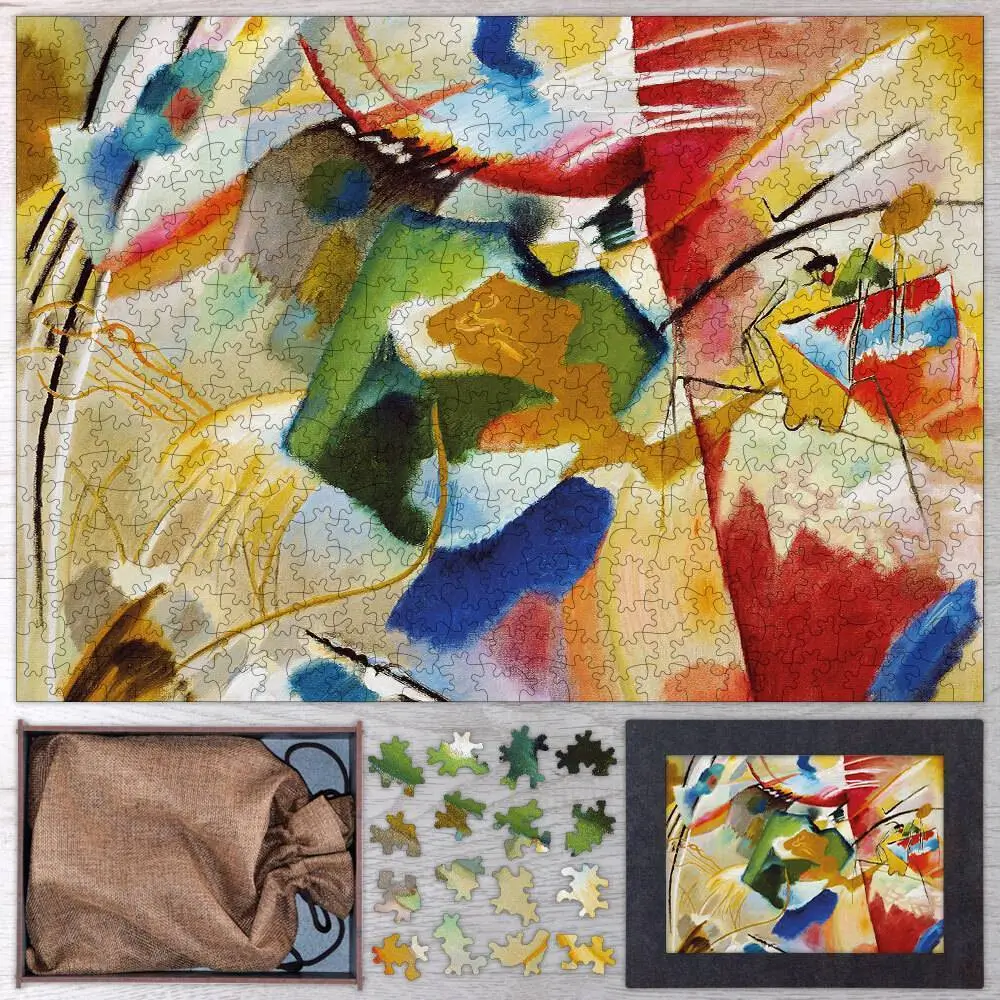Exploring the Intriguing Artistic Style of Wassily Kandinsky

We are excited to announce the latest addition to our wooden jigsaw puzzle collection, the Painting with Green Center puzzle by Wassily Kandinsky. This puzzle features a mesmerizing painting by the Russian artist, known for his pioneering work in abstract art.
The Painting with Green Center by Wassily Kandinsky is a masterpiece that has been widely celebrated and admired for its unique blend of color, form, and emotion. In this blog post, we will take a closer look at this painting and explore the background and meaning behind its creation.
The Artist: Wassily Kandinsky
Wassily Kandinsky was a Russian painter and art theorist who is widely credited with paving the way for the development of abstract art in the 20th century. Born in Moscow in 1866, Kandinsky studied law and economics before deciding to pursue a career in art. He moved to Munich, Germany in 1896, where he studied at the Academy of Fine Arts and eventually became a founding member of the influential Blue Rider group.
Painting with Green Center
Painting with Green Center was created by Kandinsky in 1913 and is considered to be one of his most significant works. This painting is characterized by its bold use of color, intricate shapes, and dynamic composition.
The painting is an abstract representation of the cosmos, with the central green circle representing the sun and the surrounding shapes and colors symbolizing the movement and energy of the universe. Kandinsky was fascinated by the idea of synesthesia, the ability to experience one sense through another, and believed that colors had inherent meanings and emotions.
The Style: Abstract Expressionism
Painting with Green Center is a prime example of Kandinsky's signature style of abstract expressionism, which emphasizes the use of color and form to convey emotion and meaning. This style emerged in the early 20th century and became popular among artists who sought to break away from traditional representational art.
The History: What was Happening When this Painting was Made
Painting with Green Center was created in 1913, a time of great change and upheaval in the world. This was the year before the outbreak of World War I, a conflict that would devastate Europe and have a profound impact on the art world. Kandinsky himself was deeply affected by the war, and his later works reflect a sense of darkness and despair.
The Colors and Meaning: Symbolism and Emotion
The colors used in Painting with Green Center are rich and vibrant, each with its own symbolic meaning. Green represents growth and harmony, while blue represents spirituality and the infinite. Red symbolizes passion and energy, and yellow represents warmth and light.
Overall, the painting is meant to evoke a sense of wonder and awe at the beauty and complexity of the universe. Kandinsky believed that art had the power to transcend language and culture and to connect people on a deep emotional level.
The Price: How Much Does the Painting with Green Center Cost
As a highly regarded masterpiece of abstract art, Painting with Green Center by Wassily Kandinsky is valued at millions of dollars. In fact, it is currently held in the collection of the Centre Georges Pompidou in Paris, France, one of the world's most prestigious art museums.
Conclusion
The Painting with Green Center puzzle by Wassily Kandinsky is a stunning representation of the artist's pioneering work in abstract art. With its intricate shapes, bold colors, and powerful composition, this puzzle is sure to provide hours of enjoyment and challenge for puzzle enthusiasts of all ages. Whether you're a fan of Kandinsky's work or simply appreciate the beauty and complexity of abstract art, the Painting with Green Center puzzle is a must
[ux_products_list ids="231"] https://puzzlesprint.com/exploring-the-intriguing-artistic-style-of-wassily-kandinsky/?feed_id=168&_unique_id=64457f00b2a89
Comments
Post a Comment